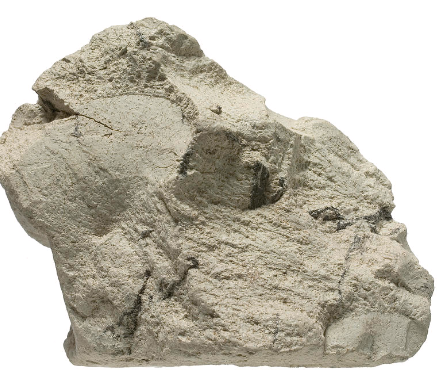- Understanding the Role of Geomembrane Liners in Waste Management
- Innovations in Geomembrane Liners for Water Management
- Geomembrane Liners: A Comprehensive Guide
- The Future of Geomembrane Liners in Civil Engineering
- Geomembrane Liners: Enhancing Landfill Stability
Manager:
WhatsApp:+86 177 0135 2670
Tel:+86 177 0135 2670
Email:marketing@okorder.com
Address:3rd Floor, No.2 Building, No.1 Sanlihe Road
What happens when bentonite gets wet?
Bentonite is a clay material that has many uses and properties that make it valuable in different ways. One of its most intriguing characteristics is when it gets wet. This article therefore, explores the fascinating phenomenon of what happens when bentonite gets wet, with particular emphasis on its role in bentonite blankets.

Understanding Bentonite
To better understand why bentonite reacts to moisture as it does, it is crucial to know what bentonite is and its characteristics. Bentonite is an absorbent kind of clay derived from volcanic ash, made primarily up of montmorillonites – a type of smectitic clay mineral. It has unique features which facilitate water absorption and other liquids.
The Bentonite Blanket
Bentonite’s use in the construction industry often centers around waterproofing applications. The commonest example being a bentonite blanket also known as a bentonitic waterproofing membrane or geomembrane. These blankets are layers of Geotextiles or other materials sandwiched between them by layers of bentonitic clays to prevent water infiltration.
Hydration Process
This paper investigates the hydration process whereby when exposed to water, Bentonite undergoes remarkable transformations on meeting water molecules penetrate into the structure clay particles causing these particles to swell and expand. Some varieties of bentonites can absorb several times their own weight in water hence they have exceptional ability to take up water.
Swelling and Sealing
During this process, when Bento-nites are saturated with water through assimilation; they enlarge thus forming a dense barrier which restrains seepage through them other wise known as swelling action that makes them efficient for waterproofing purposes. Consequently, gaps or voids in surrounding soil or substrate pores are filled by the swelled up Ben-tonites thereby shutting off any passage way for water entering soil horizons.
Enhanced Waterproofing
Swelling and the sealing features of bentonite make it very effective against water penetration. This is because in bentonite blankets, swelling and tight sealing are important in creating a durable and long term waterproof barrier. Through different hydrological conditions, such blankets can remain impervious to water making it impossible for water to enter.
Self-Healing Properties
Another attribute of Bentonite wetting observed earlier is that they have self-healing qualities. The particles of clay will rehydrate and swell when the blanket is punctured or broke thus repairing any leaks from it. Therefore, this characteristic makes these Bentonitic blankets more resistant to damage thereby enhancing their dependability and durability against most potential hazards.
Compatibility with Different Soils
Furthermore, one advantage of using bentonite blankets as underground waterproofing materials is that they work effectively irrespective of type of soil used. Thus regardless whether the substrate consists of silt, sand or clay types; bentonites can be adapted to a wide range soil textures thus preventing seepage. Hence because of this flexibility, bentonites’ application extends across diverse substructures like foundations as well as tunnels.
Environmental Considerations
Besides being effective waterproofing agents, bentonite blankets are eco-friendly. It is natural material meaning its effect on environment is minimal in comparison with synthetic membranes for water proofing which may contain harmful chemicals though non-toxicity and safety around them are key advantages over other similar products.
Long-Term Performance
The longevity by which bento-nites maintain their effectiveness at keeping off moisture forms another vital factor that determines choice for heavy duty coverings. In fact these covers can last tens years yet still remain impervious due to its ability to get along without decay unlike traditional methods whose efficacy may wane over time even under harsh weather conditions.
Installation Considerations
The effectiveness of bentonite blankets critically depends on correct installation. Proper positioning and consolidation of bentonite layers are carefully done during the time of their installation. Moreover, when it comes to seam sealing and detailing, care must be taken so that water does not bypass the waterproofing barrier. The performance and longevity of bentonite blankets can be increased through following recommended installation practices.

Conclusion
In conclusion, how bentonite reacts to moisture is an interesting process that is important in its application as a waterproof material. Bentonite undergoes hydration, swelling, and finally seals itself off once moistened making it more effective in preventing water from getting into it. Bentonite blankets have become durable and permanent watertight solutions for different types of structures due to their self-healing ability as well as compatibility with diverse soil types. By adopting the peculiarities of bentonites, engineers and contractors can develop resilient waterproofing systems withstanding the test of time."
-
2024-05-15How long does bentonite waterproofing last?
-
2024-05-15What is bentonite used for?
-
2024-05-15What happens when bentonite gets wet?
-
2024-05-15Does bentonite go bad?






